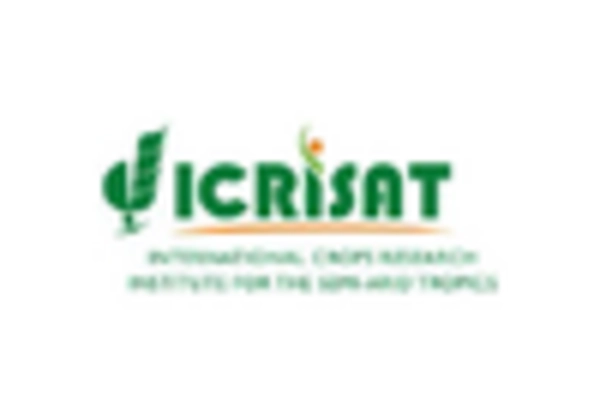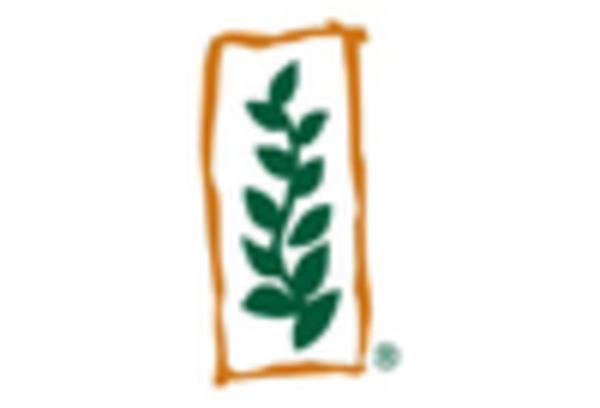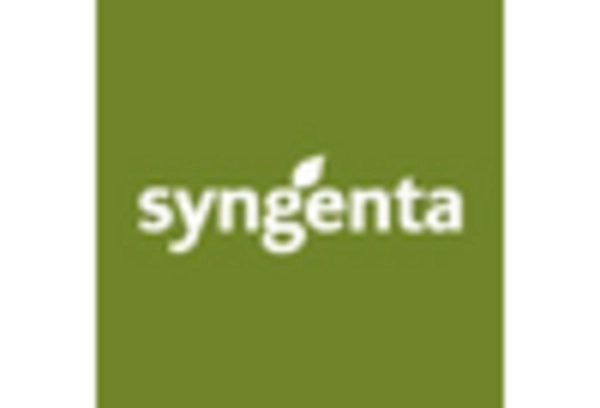Market Trends
Key Emerging Trends in the Biofortification Market
Biofortification market is witnessing significant trends driven by increasing awareness about malnutrition, rising demand for nutrient-rich food, and advancements in agricultural biotechnology. Biofortification, the process of breeding crops with enhanced levels of essential nutrients such as vitamins, minerals, and micronutrients, holds immense potential for addressing global nutrition challenges and improving public health outcomes, particularly in low- and middle-income countries where malnutrition is prevalent. One prominent trend in this market is the growing investment in biofortified crop research and development by governments, international organizations, philanthropic foundations, and private sector stakeholders. With a growing recognition of the socio-economic and health benefits of biofortified crops, there is increasing support for initiatives aimed at developing and promoting biofortified varieties of staple food crops such as rice, wheat, maize, beans, and sweet potatoes to address nutrient deficiencies and improve dietary diversity.
Moreover, the biofortification market is witnessing expansion beyond traditional breeding approaches into biotechnological techniques such as genetic engineering, genome editing, and metabolic engineering to enhance nutrient content and bioavailability in crops. Genetic modification of crops offers precision and speed in introducing desirable traits, allowing researchers to overcome genetic barriers and develop biofortified varieties with targeted nutrient profiles, improved agronomic traits, and enhanced resilience to environmental stresses. Additionally, advancements in genome editing technologies such as CRISPR/Cas9 are enabling precise and efficient modification of crop genomes to enhance nutrient accumulation, transport, and storage, facilitating the development of next-generation biofortified crops with superior nutritional qualities and agronomic performance.
Furthermore, the biofortification market is benefiting from increasing consumer demand for nutrient-rich and functional foods with inherent health benefits. As consumers become more health-conscious and seek out natural solutions to address nutritional deficiencies and promote overall well-being, there is growing interest in biofortified foods as a convenient and cost-effective means of improving dietary quality and meeting nutrient requirements. Food manufacturers are responding to this trend by incorporating biofortified ingredients into a wide range of food products, including fortified flours, breakfast cereals, snacks, beverages, and supplements, to enhance their nutritional value and appeal to health-conscious consumers.
Additionally, the biofortification market is witnessing growing partnerships and collaborations among stakeholders across the agriculture and nutrition sectors to promote the adoption and consumption of biofortified crops and products. Multisectoral initiatives involving government agencies, research institutions, non-governmental organizations, farmers' associations, food processors, retailers, and community-based organizations are being established to raise awareness about biofortified crops, build capacity for their production and distribution, and create enabling environments for their adoption and consumption. Such collaborations are essential for scaling up biofortification efforts, reaching vulnerable populations, and achieving meaningful impacts on nutrition and public health outcomes.
Moreover, the biofortification market is influenced by regulatory policies, trade dynamics, and market incentives that affect the adoption, commercialization, and consumer acceptance of biofortified crops and products. Regulatory frameworks governing genetically modified organisms (GMOs), food safety, and nutrient content claims play a crucial role in shaping the regulatory environment for biofortified crops and products, influencing research priorities, investment decisions, and market access opportunities. Market incentives such as subsidies, tax incentives, premium pricing, and public procurement programs can also influence farmer adoption, consumer demand, and market penetration of biofortified crops and products, driving market growth and sustainability.
In conclusion, the biofortification market is experiencing significant trends driven by increasing recognition of malnutrition as a global health challenge, advancements in agricultural biotechnology, growing consumer demand for nutrient-rich foods, and collaborative efforts to promote nutrition-sensitive agriculture. As biofortification gains momentum as a cost-effective and sustainable strategy for improving nutrition and public health outcomes, the market for biofortified crops and products is poised for continued growth and innovation. With continued investments in research and development, supportive policies and incentives, and concerted efforts to raise awareness and build partnerships, biofortification has the potential to make a meaningful contribution to addressing malnutrition and promoting food security and sustainable development worldwide.









Leave a Comment